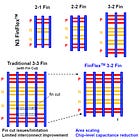Triển khai các khung tham chiếu CMOS dựa trên CAM cho bộ xử lý hình thái thần kinh (Carnegie Mellon U.)
A technical paper titled “NeRTCAM: CAM-Based CMOS Implementation of Reference Frames for Neuromorphic Processors” was published by researchers at Carnegie Mellon University.
Abstract:
“Neuromorphic architectures mimicking biological neural networks have been proposed as a much more efficient alternative to conventional von Neumann architectures for the exploding compute demands of AI workloads. Recent neuroscience theory on intelligence suggests that Cortical Columns (CCs) are the fundamental compute units in the neocortex and intelligence arises from CC’s ability to store, predict and infer information via structured Reference Frames (RFs). Based on this theory, recent works have demonstrated brain-like visual object recognition using software simulation. Our work is the first attempt towards direct CMOS implementation of Reference Frames for building CC-based neuromorphic processors. We propose NeRTCAM (Neuromorphic Reverse Ternary Content Addressable Memory), a CAM-based building block that supports the key operations (store, predict, infer) required to perform inference using RFs. NeRTCAM architecture is presented in detail including its key components. All designs are implemented in SystemVerilog and synthesized in 7nm CMOS, and hardware complexity scaling is evaluated for varying storage sizes. NeRTCAM system for biologically motivated MNIST inference with a storage size of 1024 entries incurs just 0.15 mm^2 area, 400 mW power and 9.18 us critical path latency, demonstrating the feasibility of direct CMOS implementation of CAM-based Reference Frames.”
Find the technical paper here. Published May 2024 (preprint).
Nair, Harideep, William Leyman, Agastya Sampath, Quinn Jacobson, and John Paul Shen. “NeRTCAM: CAM-Based CMOS Implementation of Reference Frames for Neuromorphic Processors.” arXiv preprint arXiv:2405.11844 (2024).
Related Reading
Running More Efficient AI/ML Code With Neuromorphic Engines
Once a buzzword, neuromorphic engineering is gaining traction in the semiconductor industry.

